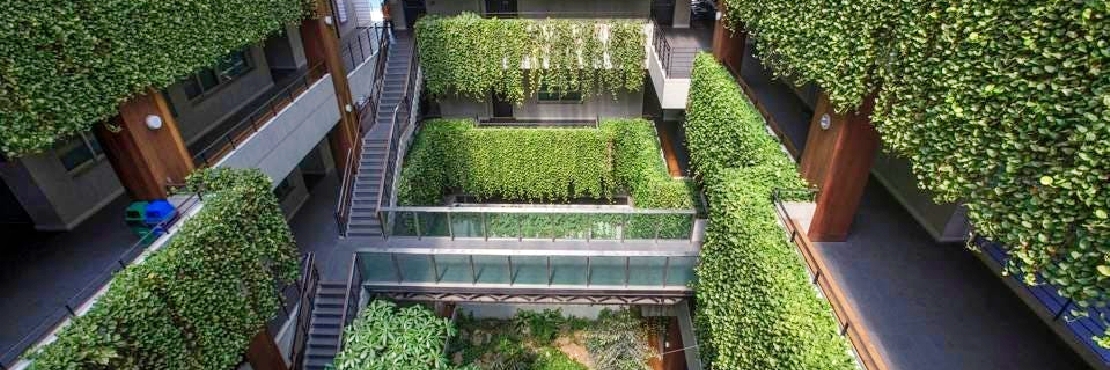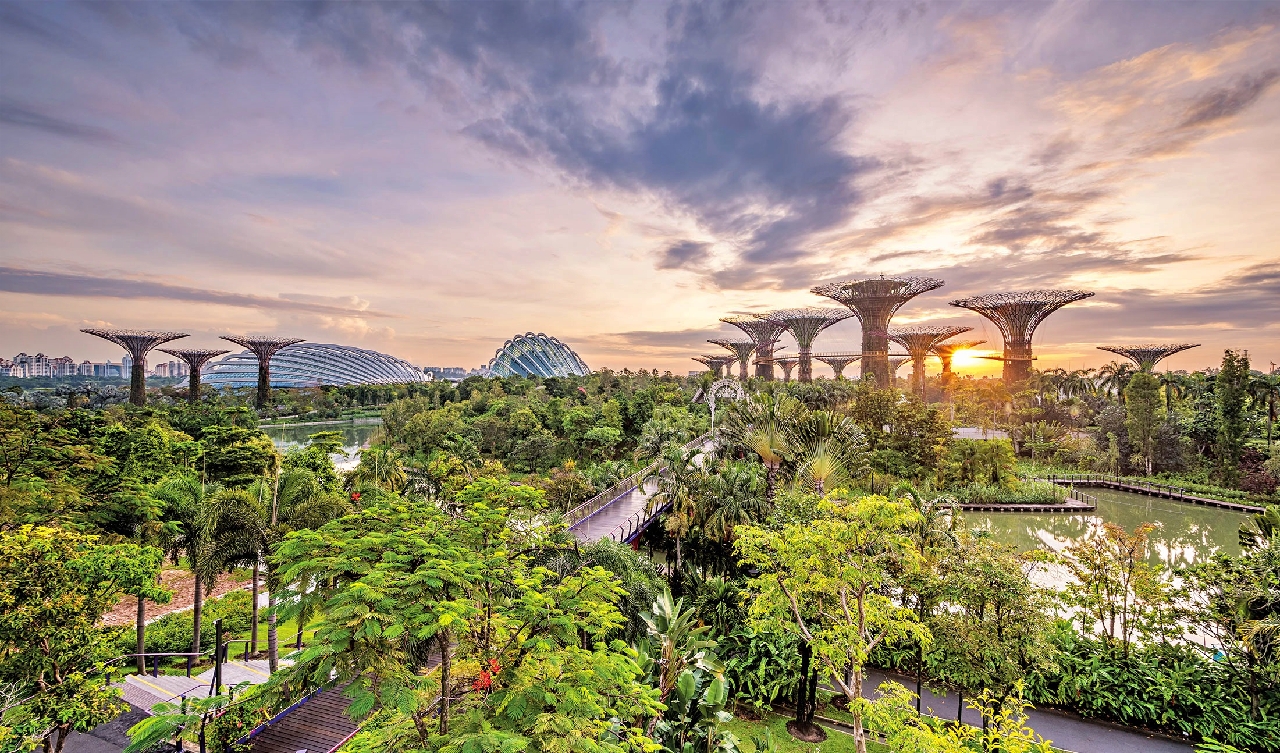Jamie Hailstone of Forbes writes:
Whoever said the living was easy in summertime never lived in a city between the months of June and August. Of course, higher temperatures in urban areas are nothing new, but the summer of 2021 has already proved to be a particularly sticky one with heatwave warnings in Japan, California and England. The threat of global warming could see temperatures rise even further and as people try to return to work in major cities, the question remains what can be done to ensure they remain as cool as possible.
But before everyone reaches for the air conditioning dial, there are alternatives.
Living walls – sometimes referred to as green walls – can help cool both the interior and exterior of buildings, as well as improve air quality and absorb sound in city centres. They can also improve the aesthetics of drab office blocks, so why are they not more popular?
Internationally renowned landscape and garden designer Andy Sturgeon said recent reports suggest that living walls can insulate a building to great effect and keep it in excess of 1 degree centigrade warmer in winter and 1 degree cooler in summer. “When green walls first appeared there were some notable failures as you might expect with a new technology and clients became aware that there was a risk and a cost associated with them,” said Mr. Sturgeon.
“I would say that green walls have now finally taken off as landscape architects, architects and installers understand them more and work together to use them to great effect…”
Andy Sturgeon
Landscape Designer
“Architects liked the idea in principle, but a living thing can’t be applied to a building like an inert cladding, it is not static and it has to be maintained. “I would say that green walls have now finally taken off as landscape architects, architects and installers understand them more and work together to use them to great effect. The plant choices are better and there are some excellent examples around the world,” he added. “Many cities including London and Singapore now encourage green walls through their planning policies and this is already having a significant impact.”
Siân Moxon, a Senior Lecturer in sustainable design and Researcher in urban biodiversity at London Metropolitan University says living walls can also mitigate environmental problems that are particular to cities, such as flooding and overheating caused by a prevalence of hard surfaces, air pollution, and poor access to nature. “Their planting helps to cool building interiors and streets through shading, insulation and evapotranspiration,” says Ms. Moxon.
“As well as improving people’s health and wellbeing, green walls boost urban biodiversity, providing habitat for nesting birds and pollinators to help address the ecological crisis as well as the climate one. Simple, inexpensive ‘green facades’, formed from climbing plants grown at ground level, are most versatile, requiring little maintenance. “But complex ‘living wall’ systems can have greater impact on commercial projects. There is also potential for ‘bioactive facades’, constructed of materials receptive to algae and moss growth, to transform cities in the future,” she added.
Rudi Scheuermann, Director and Global Leader Building Envelope Design at Arup, says larger cities with more than 1 million inhabitants are often 12 degrees warmer than urban areas because of the “heat island” effect with vehicle emissions, heating and cooling systems and noise all becoming trapped at street level. He says by using just 20% of a building’s external coverage for greenery, temperatures in cities can be “significantly” reduced. Although the figures depend on how narrow the streets are and how high the buildings are in a city, he says you could reduce the average temperature by one degree in Los Angeles’ urban sprawl and four degrees in Berlin.
“We need to involve all stakeholders – politicians, building owners and users – and make them aware that every plant counts…”
Rudi Scheuermann
Director and Global Leader Building Envelope Design at Arup
In other cities around the world, the figure could be even higher. “We need to involve all stakeholders – politicians, building owners and users – and make them aware that every plant counts,” explained Mr. Scheuermann. The concept of living walls is hardly new, but Rudi says the concept has failed to take off because – more often than not – they are treated as purely decorative “pieces of art” with the wrong type of plants, which require a lot of effort to keep them alive and keep looking good. “I often refer to those kind of installations as vertical Baroque gardens,” he says. “What we need are more natural meadows. They are more robust. They take care of themselves. That’s what I would like to see more of in our cities.”
There’s no doubt that major cities will continue to be economic powerhouses in a post-Covid world, but if they are to flourish and attract the brightest and the best, then they will need to tackle issues like air quality and pollution. Some parts of the world may be better suited for living walls than others, but they could be part of the solution and pave the way for a greener world. They could also make cities a more pleasant place to live, which is never a bad thing.
Read more: Are Living Walls The Key To Cooler Cities?
 Greenroofs.comConnecting the Planet + Living Architecture
Greenroofs.comConnecting the Planet + Living Architecture







